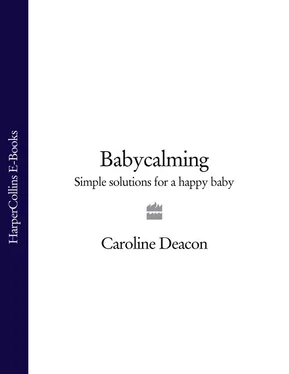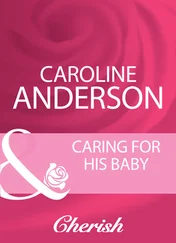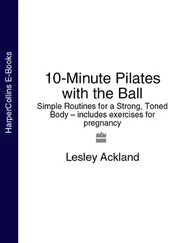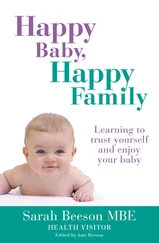Every healthy baby wants to communicate, will make demands and will make his presence felt. Initially, the only way he knows how to get your attention is by crying. In general, if you understand and work within his needs, he will not need to cry for prolonged periods and you and he will enjoy plenty of positive and happy times together.
This does not mean endless self-sacrifice on your behalf: normally, your needs and your baby’s needs will not fundamentally conflict, because nature has designed a system that works in harmony with you both.
What This Book Can Do for You
This book is fundamentally different from the many other parenting books on the shelves. Some books cast you loose, tell you to trust your instincts and leave you to get on with it. If anything, they hope that if you respond to your baby all the time without question, he will eventually just evolve into the kind of child that you would like him to be. Most parents need more reassurance and guidance than that.
Other books – and this is a more popular approach at the moment – impose on your baby a rigid schedule from the day he is born. However, unless this particular schedule happens to suit you and your baby, you are probably both going to be unhappy with it. If it does work for you, the chances are that this is the schedule or routine you would both have arrived at anyway!
Then there is a third way, a middle way, which is to understand your baby’s needs, respond to them appropriately, and to introduce the routines and boundaries your child wants – but at the right times and in a way that does not fundamentally conflict with your own needs. Babycalming follows this third way and shows you what is appropriate and when. It is a three-step plan based on your baby’s three basic needs for contact, food and sleep, and it will also help you to devise and settle into a routine that is right for you both.
It is a combination of tried-and-tested methods from my experience as an NCT (National Childbirth Trust) breastfeeding counsellor and mother of three, and research-based evidence.
Throughout the book you will find quotations from different experts, philosophers and public figures regarding children and childcare over the last couple of centuries. They are quoted at the beginning of each chapter, then at the end you will find out when it was said. You will see that some opinions on childcare haven’t changed at all, whereas others will seem completely inappropriate. They are there to remind you that opinions on childcare change all the time, and that as a parent you can only do what you think is best for your baby at the present time according to all the information and advice you have at that moment.
With this in mind, try not to worry or feel guilty if you find it overwhelming being a parent, or if you are unsure that you are doing the right thing for your baby. Instead, enjoy your baby, celebrate his presence in your life and know that if you can meet his three basic needs for contact, food, and sleep, you will be well on the way to bringing up a happy and contented baby.
Your Baby from Birth to Toddlerhood
~ Times change – does the advice stay the same? ~
At no previous time has there been such a wide general interest in all that concerns childhood, as shown by the numerous books constantly issuing from the press upon these subjects and the periodicals devoted to the different phases of the child problem .
Most people can ignore all sorts of noise – the buzz of conversations, engine noises, even the radio or TV – but the instant a baby starts crying, everyone looks tense. They need it to stop.
Your baby’s appearance is designed to make you want to take care of him; he has a smooth, round forehead, big eyes, a head that’s large in proportion to his body – in all mammals this signals, ‘I’m a baby – take care of me!’ In the same way, the sound of your baby’s crying is designed to make sure you attend to him – now! We all react to the sound of a baby’s cry with increased heart rate, raised blood pressure and sweating – the common reactions to stress. A baby’s cry is meant to be stressful, to evoke an instant response.
How Easy Is It to Tell Why Your Baby Is Crying?
Mothers quickly become tuned in to their own baby’s crying, so well in fact that after only three nights in a postnatal ward, a new mother can pick out her own baby’s cries in her sleep . 1
However, although you will quickly learn to identify your own baby’s cry, it’s not like a language where such-and-such a cry means, ‘I’m hungry!’ while another cry means, ‘I’m bored!’ With most babies, what varies is only the intensity and volume of their cry, rather than its tone or content, though as your baby gets older he will be more sophisticated at letting you know what he wants.
We know this from research. In one study, researchers played two tapes to mothers: one was of a one-month-old hungry baby, the other was of a newborn baby who’d just been circumcised. When the mothers were asked whether the babies were hungry, sleepy, in pain, angry, startled or wet, only 25 per cent could correctly identify the hungry baby (40 per cent thought he was over-tired), while for the other tape, only 40 per cent could identify the pain cry correctly, with 30 per cent thinking he was startled or angry 2Another piece of research, from Finland, asked 80 very experienced baby nurses to listen to recordings of babies crying. Once again, even with their experience, they were correct only 50 per cent of the time. 3
Some researchers have tried analysing babies’ cries using acoustical measuring equipment. People like Barry Lester at Brown University have found that a baby’s cry may be significantly different when he has certain medical conditions; for instance, a malnourished baby has a weaker cry, while babies with cri-du-chat , a chromosome disorder, also have a distinctive cry. However, apart from these unusual examples, it seems impossible to classify the average baby’s cry as a precise language.
DID YOU KNOW?
– babies know more about crying than you do!
Researchers played tape-recordings of crying babies to newborns, and discovered that at birth they could distinguish their own cries from those of other babies. Hearing another newborn baby cry was also likely to start ‘sympathy’ crying in these listening newborns, but they were not disturbed by computer-simulated cries, a crying baby chimpanzee or even a crying, five-month-old baby. 4
This does not mean it’s not worth trying to understand your baby’s cries! In time you probably will get to know what your baby wants, not by interpreting his cry, but by coming to know who he is, what he likes, and of course by the context: whether he has been fed recently, needs a sleep, and so on.
How the Three-step Plan Will Help
The three steps are a great way to start thinking about responding appropriately to your baby’s crying. Over time, as you grow in confidence, and as you and your baby get to know each other and to learn to communicate, you will begin to learn what is wrong without any help from other people.
Am I Spoiling My Baby by Picking Him Up When He Cries?
Some people believe that picking a baby up when he cries, teaches him to cry, and this view is at the heart of many sleep programmes, as you will see later in this book. But while there is a stage at which a baby can be encouraged to fall asleep alone, a newborn who is left to cry will not feel loved and secure, just abandoned. Tiny babies are incapable of comprehending why they might have to wait, but if your baby knows his needs will be met when he cries, he will learn that he is not alone – he is loved, he can influence the world, and the world in turn is dependable (all important lessons).
Читать дальше












